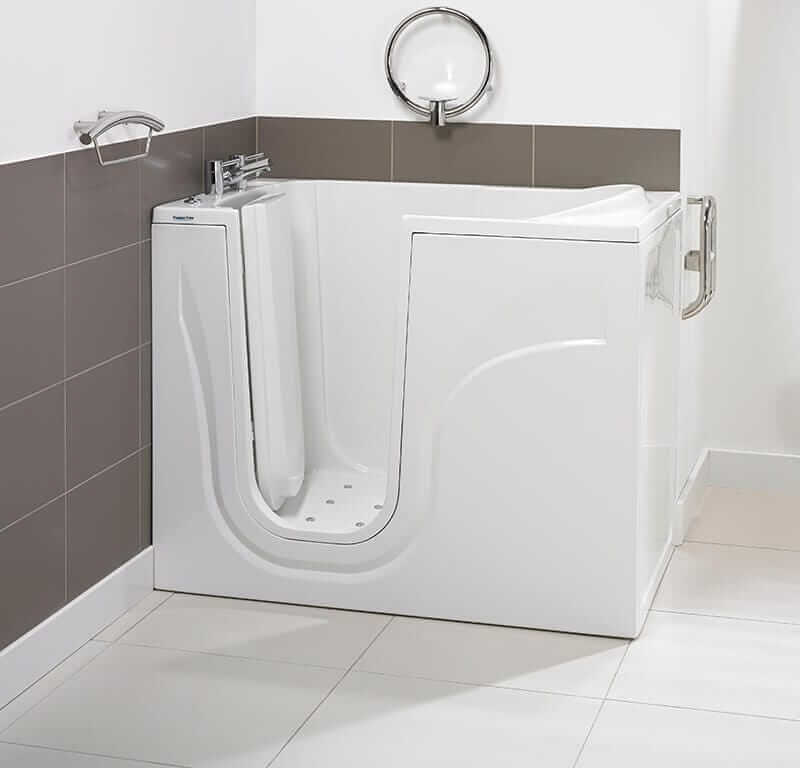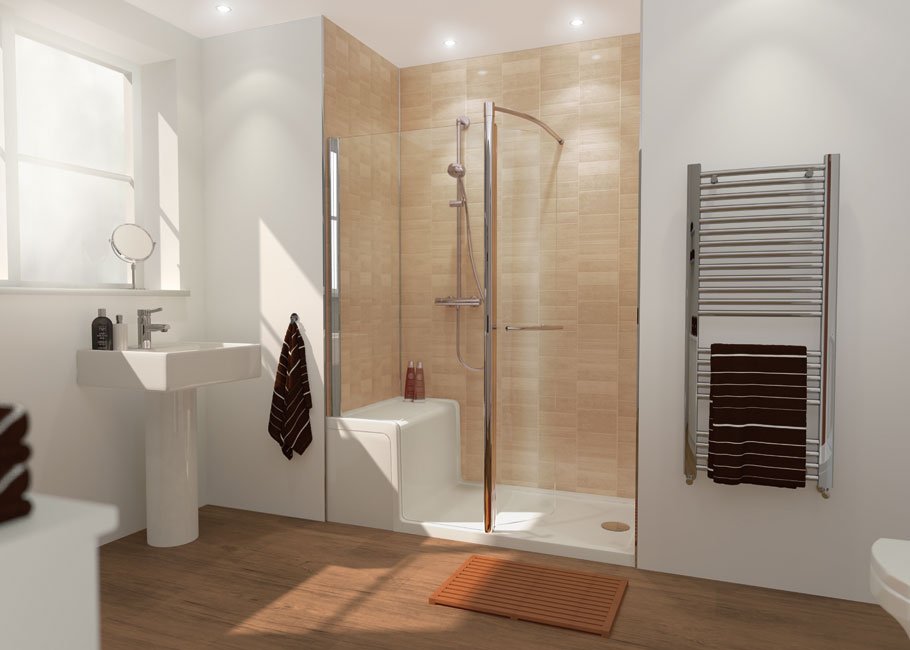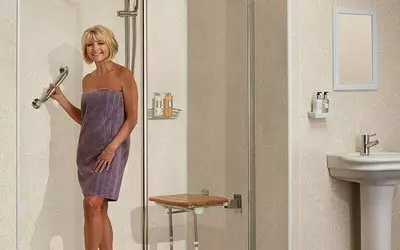When it comes to making your bathroom more accessible, deciding what to do next can be a difficult task.
However, when looking at a mobility bathroom, there are two main options. You can either have a walk-in shower or a walk-in bath. But which one do you choose?
Get a FREE Brochure
Simply complete our form to see a full range of bathing solutions & their key features. It takes no time at all!
Which do you choose?
When it comes to choosing between a walk-in bath and a walk-in shower, there are a few big choices you need to make. Each one serves a different purpose, and you should pick the one that is right for you.
Walk-in bath

A walk-in bath is essentially a bath with a door on the side, meaning that you do not need to step over the side to enter the bath. Most tend to be double-height where you sit rather than lie down, to ensure that your whole body is submerged in the water and keep you warm.
Get a FREE Brochure
Simply complete our form to see a full range of bathing solutions & their key features. It takes no time at all!
Many people prefer a bath over showers, but are unable to get in and out of a traditional bath, in which case the ideal solution would be a walk-in bath.
We’ve split out some of the pros and cons of walk-in baths, to help you quickly identify which one is right for you.
Pros of walk-in baths
- Relaxing – a walk-in bath means you can soak in the tub and really relax your aching muscles. This can be especially helpful for those with joint conditions, such as arthritis
- Low step – our walk-in baths come with the lowest access available, so entering and exiting is as easy as possible
- CosyWarm – our answer to the period between filling and draining the bath, the CosyWarm seat keeps you warm while the bath fills or drains
- Space saver – some of the smaller walk-in baths, such as the sit down walk-in bath, can really be beneficial in smaller bathrooms and help free up much-needed floor space
- Multi-functional – useful if you have other members of the house who also need a bath to bathe
Cons of walk-in baths
- Not always accessible – although the door is spacious and thresholds are low, it can be difficult for those with more severe mobility problems to get into and out of a walk-in bath. It would be very difficult for a wheelchair to use a walk-in bath for instance.
Choose a walk-in bath if: you have problems with balance or poor core strength, you have other people in the house who need a bath (e.g. children), or you want to relax your muscles when suffering from joint pain. Browse our range of walk-in baths here.
Alternatively, you could choose a walk-in shower.
Walk-in shower

For speed and ease of use, people often choose walk-in showers over baths, especially as people tend to shower more often and baths are used less and less. A lot of walk-in showers can be built into wet rooms, to allow for full accessibility.
There are various pros and cons for walk-in showers, and we’ve outlined them below.
Pros of walk-in showers
- Accessible – half-height doors and wider frames mean that walk-in showers are perfect for accessible bathing
- Low threshold – our walk-in showers come with very low edges, so entering and exiting is as easy as possible
- Sizes – with many sizes available, showers can be fitted into most bathrooms, sometimes replacing a traditional bath
Cons of walk-in showers
- Bathroom layout – Your bathroom layout may not be suitable for a walk-in shower, we can normally overcome this and can help change the layout of your bathroom
- Single-use – your shower can only operate as a shower and if you have other people who prefer to use the bath (e.g. small children) this can be difficult in a walk-in shower
If you want to find out more about replacing your walk-in-bath with a walk-in-shower, check out our guide to help you with the process.






